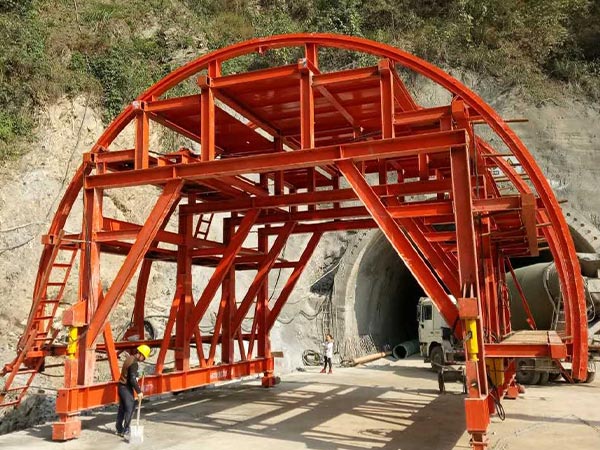What are the technical requirements for tunnel structure design?
The tunnel structure is an important part of the underground building structure, and its structural form can be selected according to the type of the ground floor, the use function and the construction technology level. Its structure mainly includes semi-lining structure, thick arch thin wall lining structure, straight wall arch lining structure, composite lining structure and other forms.
1. Determination of lining section type and geometric size
The type of tunnel lining structure should be determined according to the surrounding rock geological conditions, construction conditions and use requirements.
The tunnels of high-speed, first-level and second-level highways should use composite lining; under the conditions of I, I and Dian-level surrounding rock, the cross-sections of automobile crossroads, third-level and below-level road tunnels, except for the opening section, the lining structure type and size, It should be determined by comprehensive analysis of engineering analogy and structural calculation according to the requirements of use, surrounding rock grade, surrounding rock geological conditions and hydrogeological conditions, tunnel embedding position, structural stress characteristics, combined with engineering construction conditions and environmental conditions.

During the construction phase, the supporting parameters should also be adjusted according to the on-site surrounding rock monitoring measurement and on-site geological tracking investigation, and if necessary, it can be determined through test analysis. In order to facilitate the use of standard arch formwork and equipment, when determining the lining scheme, the type should be as few as possible, and the inner contour of the same-span arch ring should be the same. Generally, measures such as thickness adjustment and local reinforcement are adopted to adapt to different geological conditions.
2. Selection of lining materials
The lining structure material should have sufficient strength, durability and waterproofness. Under special conditions, erosion resistance and frost resistance are also required. From an economic point of view, the lining structural material must also meet the conditions of low cost and easy mechanized construction.
The lining structure material should have sufficient strength, durability and waterproofness. Under special conditions, erosion resistance and frost resistance are also required. From an economic point of view, the lining structural material should also meet the conditions of low cost and easy mechanical application.
3. General structural requirements of lining structure

(1) Protective layer of concrete
Reinforced concrete lining structure, the minimum thickness of the reinforced concrete protective layer is generally 20mm for the assembled lining, 25mm for the inner layer of the cast-in-place lining, and 30mm for the outer layer. If there is an aggressive medium, it can be increased to 50mm, and the reinforced mesh shotcrete is generally 20mm. As the thickness of the section increases, the thickness of the protective layer should also increase appropriately.
(2) Over-excavation or under-excavation of lining
In the construction of the tunnel structure, the excavation size of the cavern cannot be completely consistent with the size of the burrow designed by the lining, which causes the over-excavation or under-excavation of the lining. Over-excavation usually increases the backfilling workload, while under-excavation cannot guarantee the lining section size, so there are certain restrictions on over-excavation and under-excavation. The allowable over-under digging of the lining is calculated according to the design hole.

Cast-in-place concrete lining is generally not allowed to be under-excavated. In case of under-excavation at some points, the depth of the under-excavation part entering the lining section shall not exceed 1/4 of the thickness of the lining section, and shall not be greater than 15cm, and the area shall not be greater than 1m2. Generally, the tunnel lining structure, the average over-excavation allowable value should not exceed 10~15cm. For some key parts of the cave, such as the ring beam rock platform of the dome, the thick arch thin wall lining. (and semi-lining) arch seat rock platform, In the vicinity of the bifurcation, the allowable value of over-excavation should be strictly controlled, generally not more than 15cm.
(3) Color seam setting
Deformation joints generally refer to settlement joints and expansion joints. Settlement joints are provided to prevent the structure from deforming and breaking due to local uneven settlement. Expansion joints are provided to prevent the structure from cracking due to thermal expansion and contraction, or wet expansion and contraction. Therefore, the settlement joint is set to meet the deformation requirements of the structure in the vertical and horizontal directions, and the expansion joint is set to meet the deformation requirements of the structure in the axis direction. The width of the settlement joints and expansion joints is greater than 20mm, and should be set vertically to the tunnel axis.


